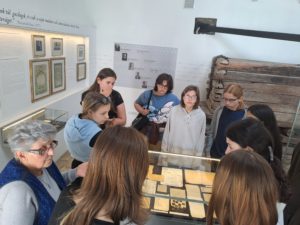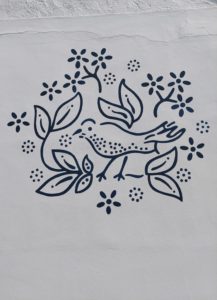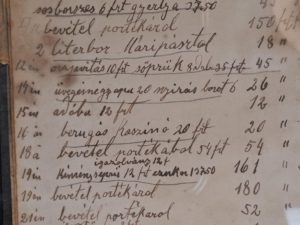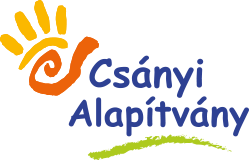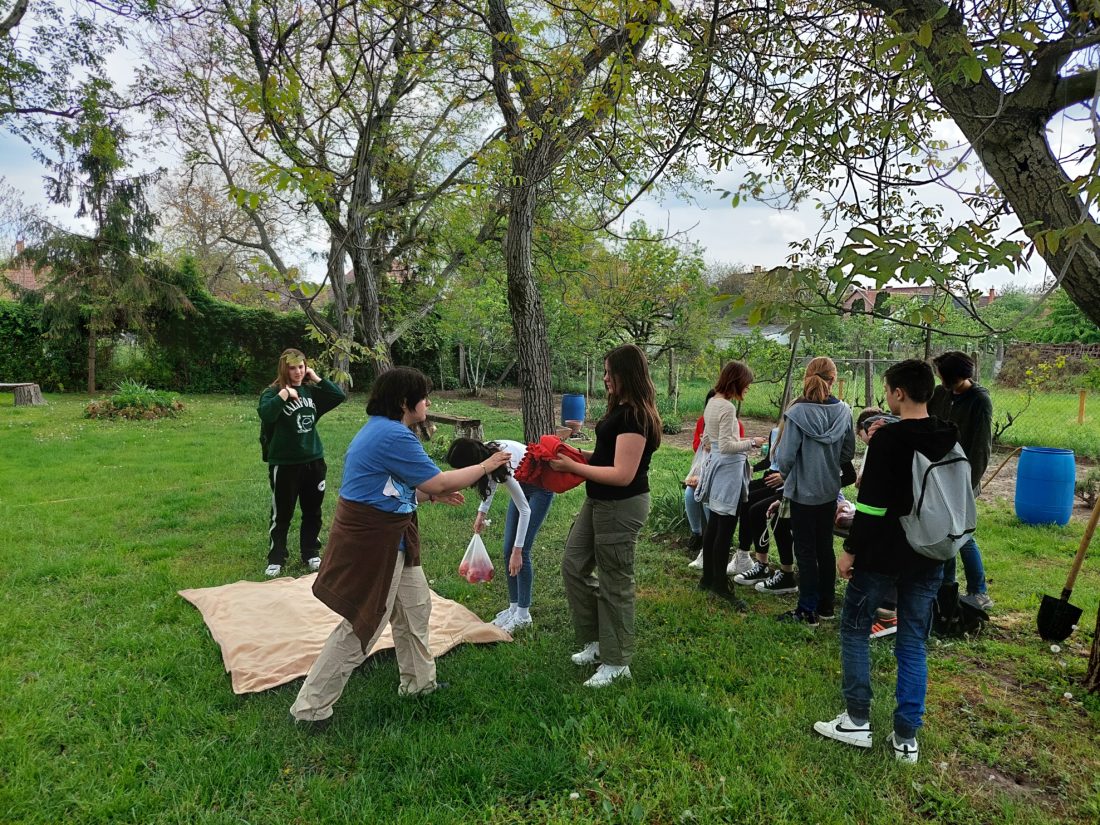
Do you know what’s the perrotin?
On Saturday morning, we went to Bácsalmás, to the blue painting workshop there. On arrival, we were shown around the workshop by a very nice, smiling lady who opened the door and introduced us to the work that goes on there. There are only six workshops left in the country. The first stop is the dyeing room, where the hand printing is done on the previously bleached textile. They hammer nails into the pieces of wood to produce the patterns. Fortunately, this workshop has preserved many of the original prints, many of which were set on fire during the winter. Our next stop was a tour of the machine printer. Here we were able to see a machine over 150 years old, the perrotin, which is still doing its job perfectly today. It is an innovation compared to hand printing, but Zoltán Bakos uses hand patterning in his current production. With mechanical printing, you can go faster, but you have to clean and change it, which doesn’t necessarily simplify things. Next came the pendulum painter. Here, a material is boiled in a well 3 metres deep and the textile is dipped into it to give it a blue colour. The more the fabric is immersed, the darker the colour becomes. At this stage, aeration is very important, because the exposure to oxygen deepens the colour and ensures that it is free of stains. The dyed fabrics are then dried. And then the linen is ready to be used to make clothes, pillowcases, tablecloths, sackcloths and aprons. It’s up to our imagination. In addition to the machines, we visited an exhibition room where we could see very old diaries, account books, awards, letters. Taking advantage of the beautiful garden, we couldn’t miss the opportunity to spend some quality time together there. We had lunch, talked and played games. As time passed in the blink of an eye, we said goodbye to the workshop, the garden and the lovely lady. We gained a lot of knowledge, wisdom and good memories.
Lívia Lévai Sz3
